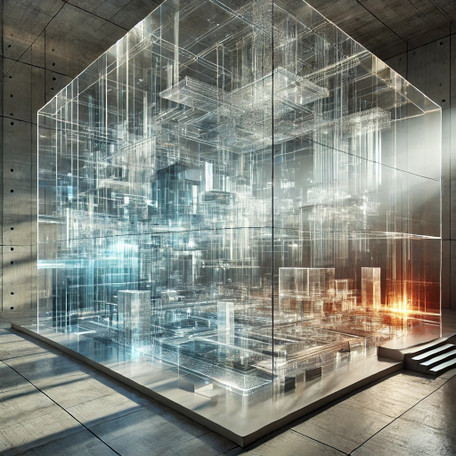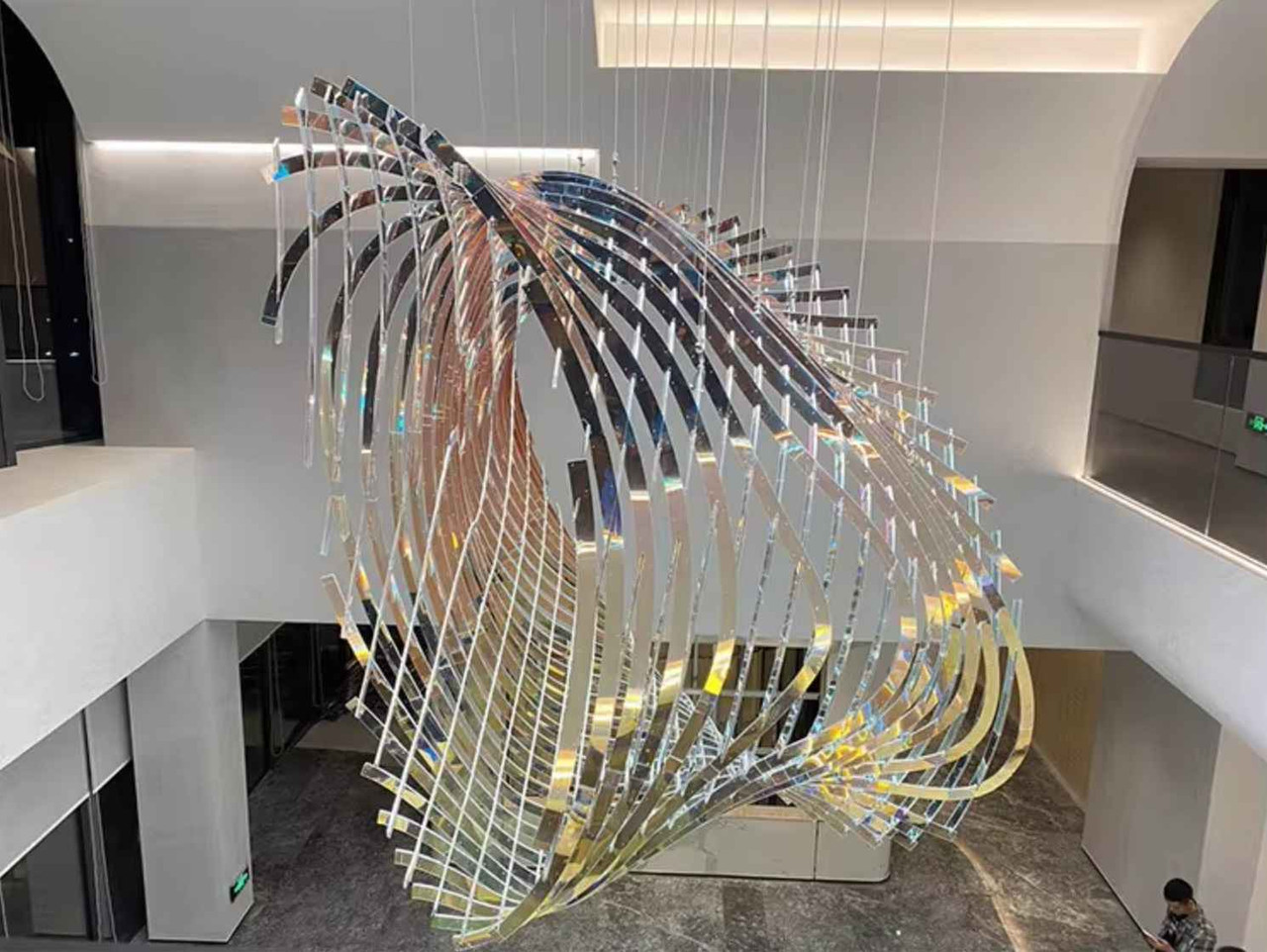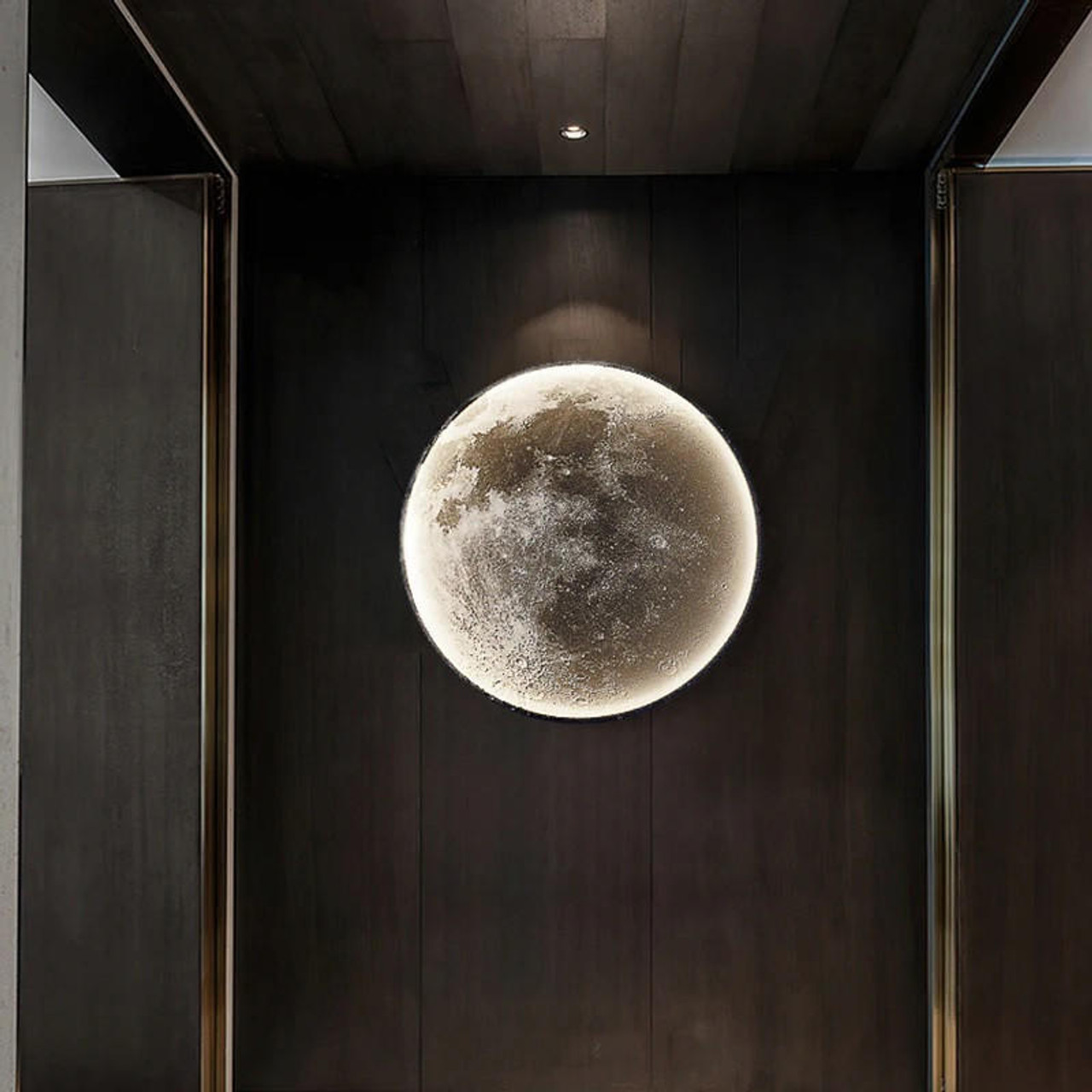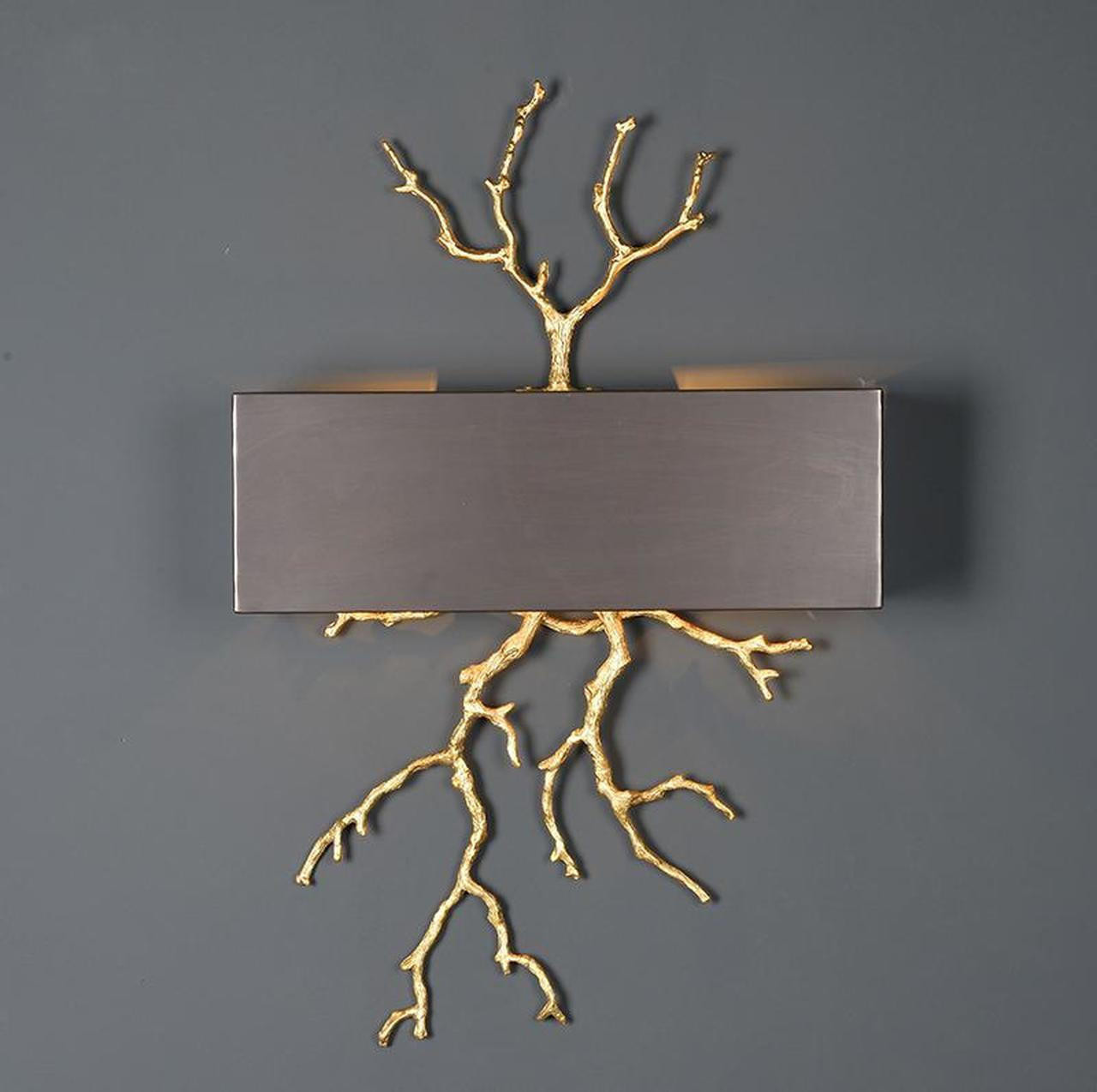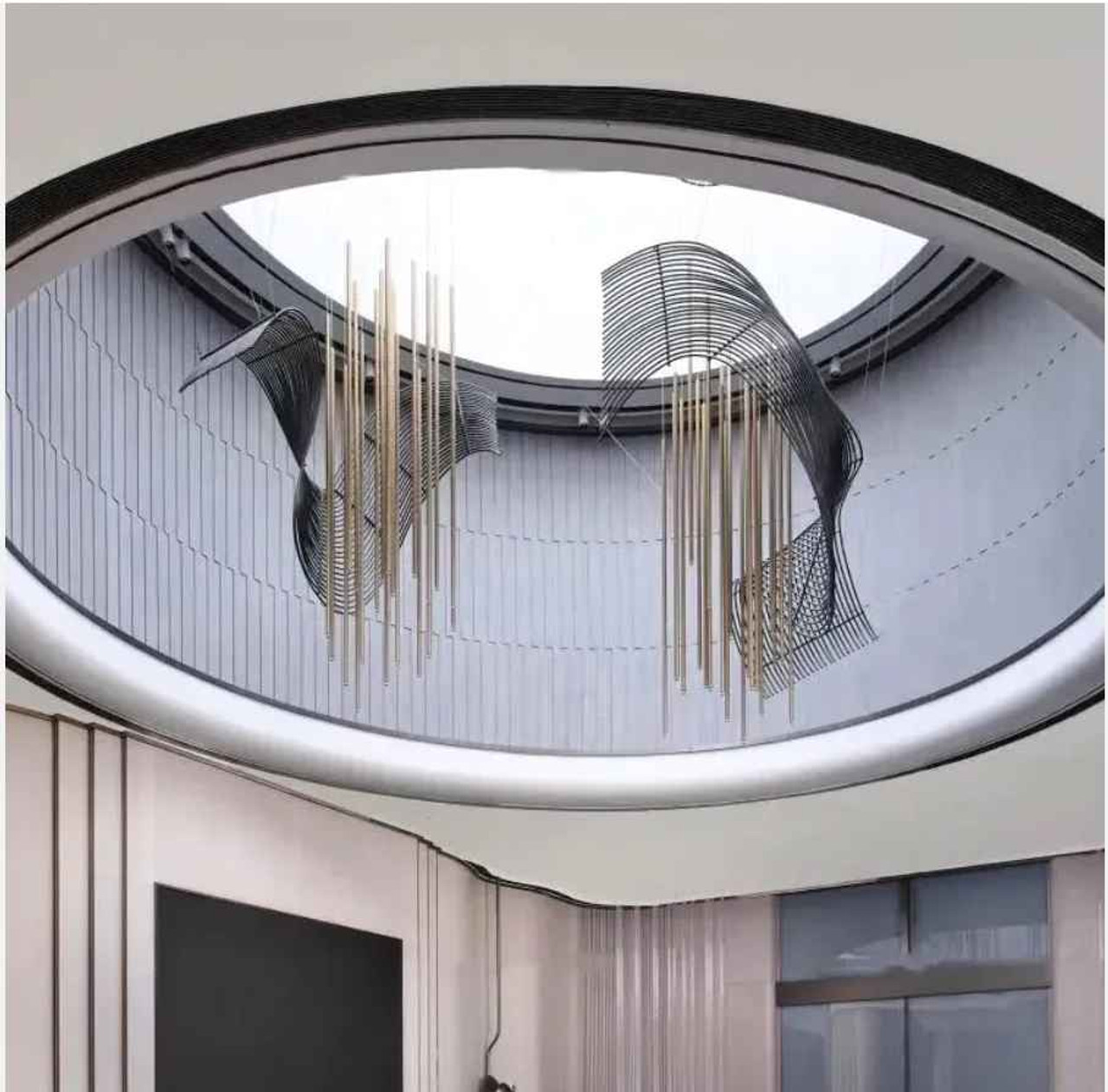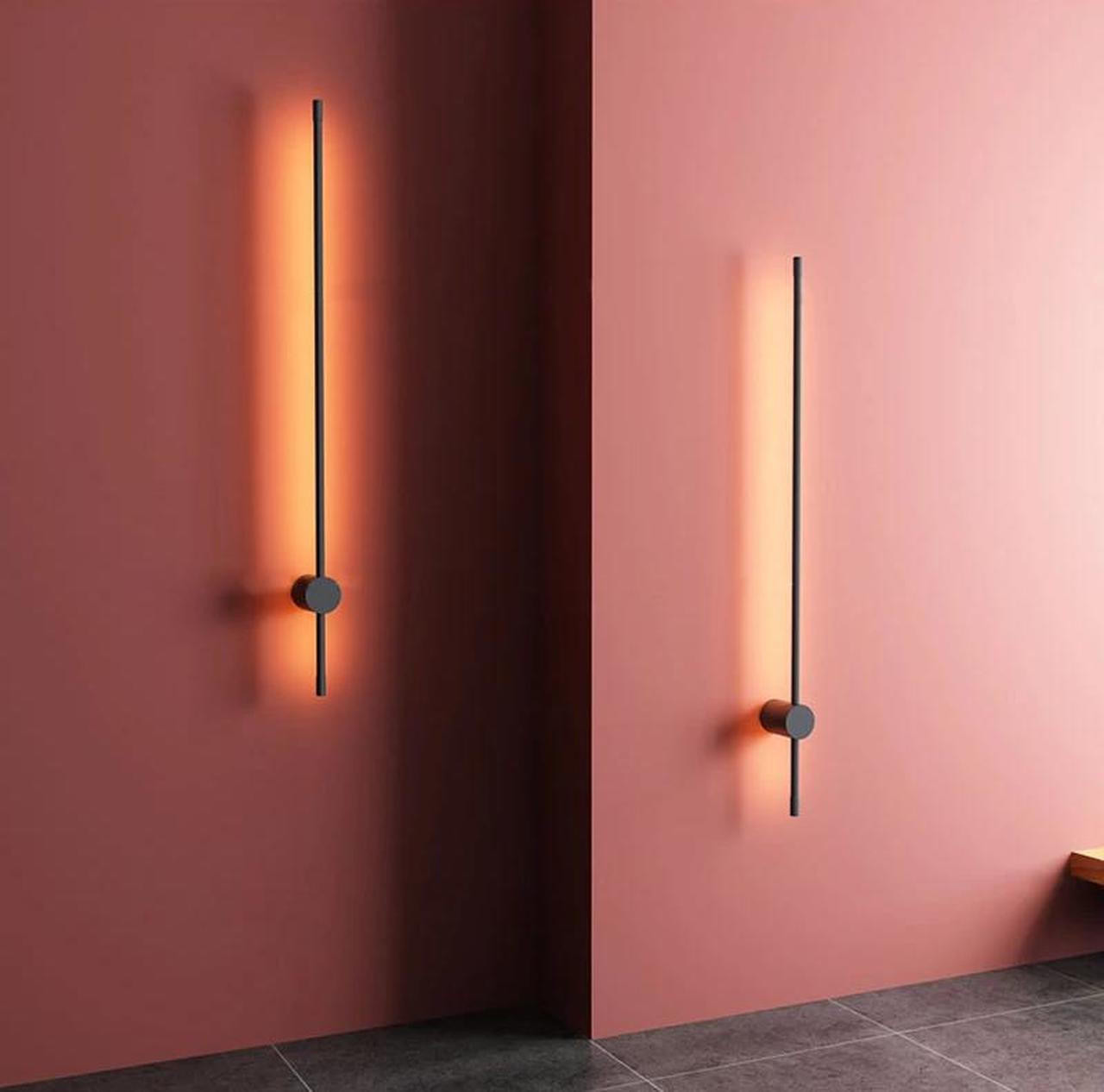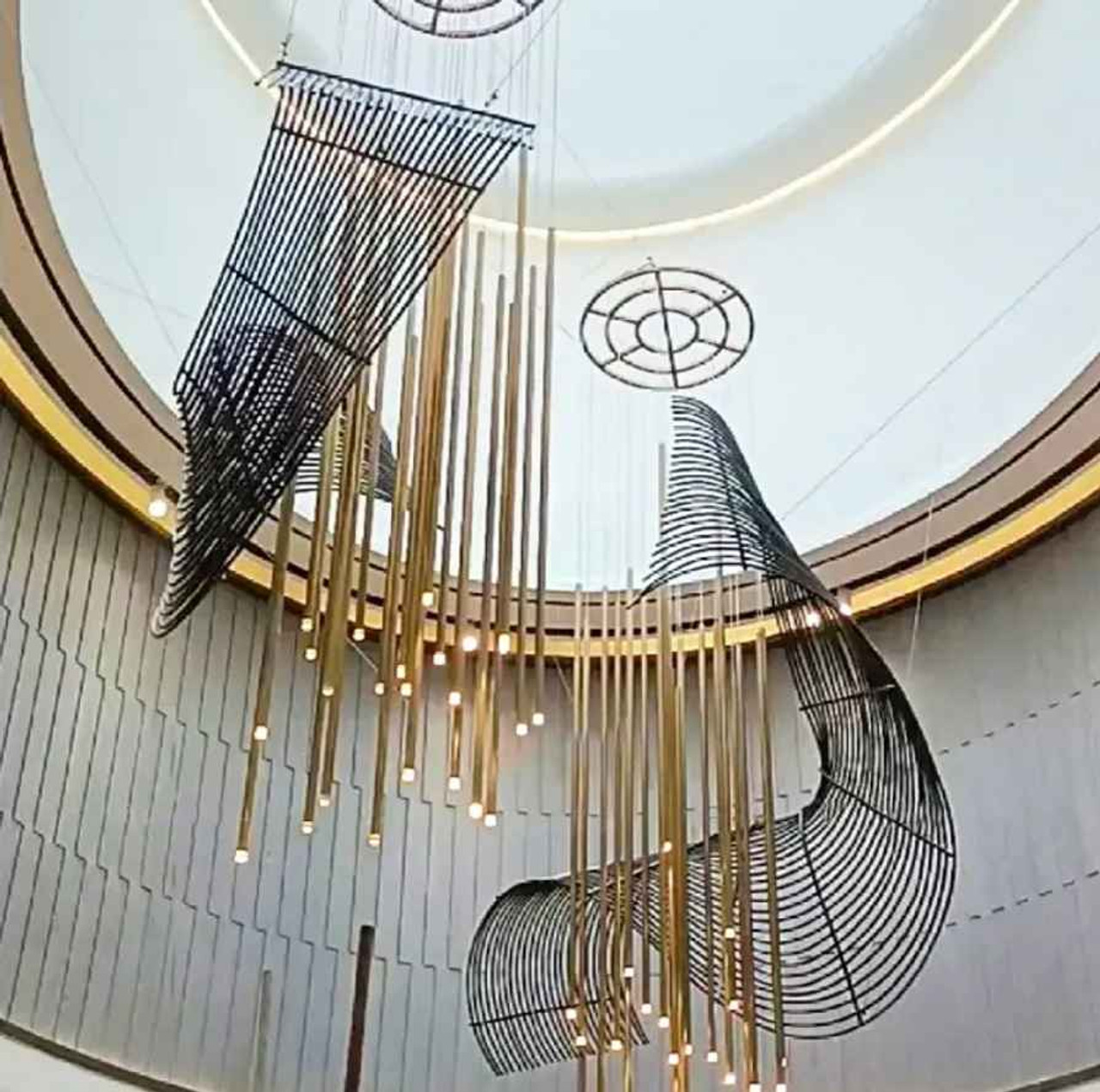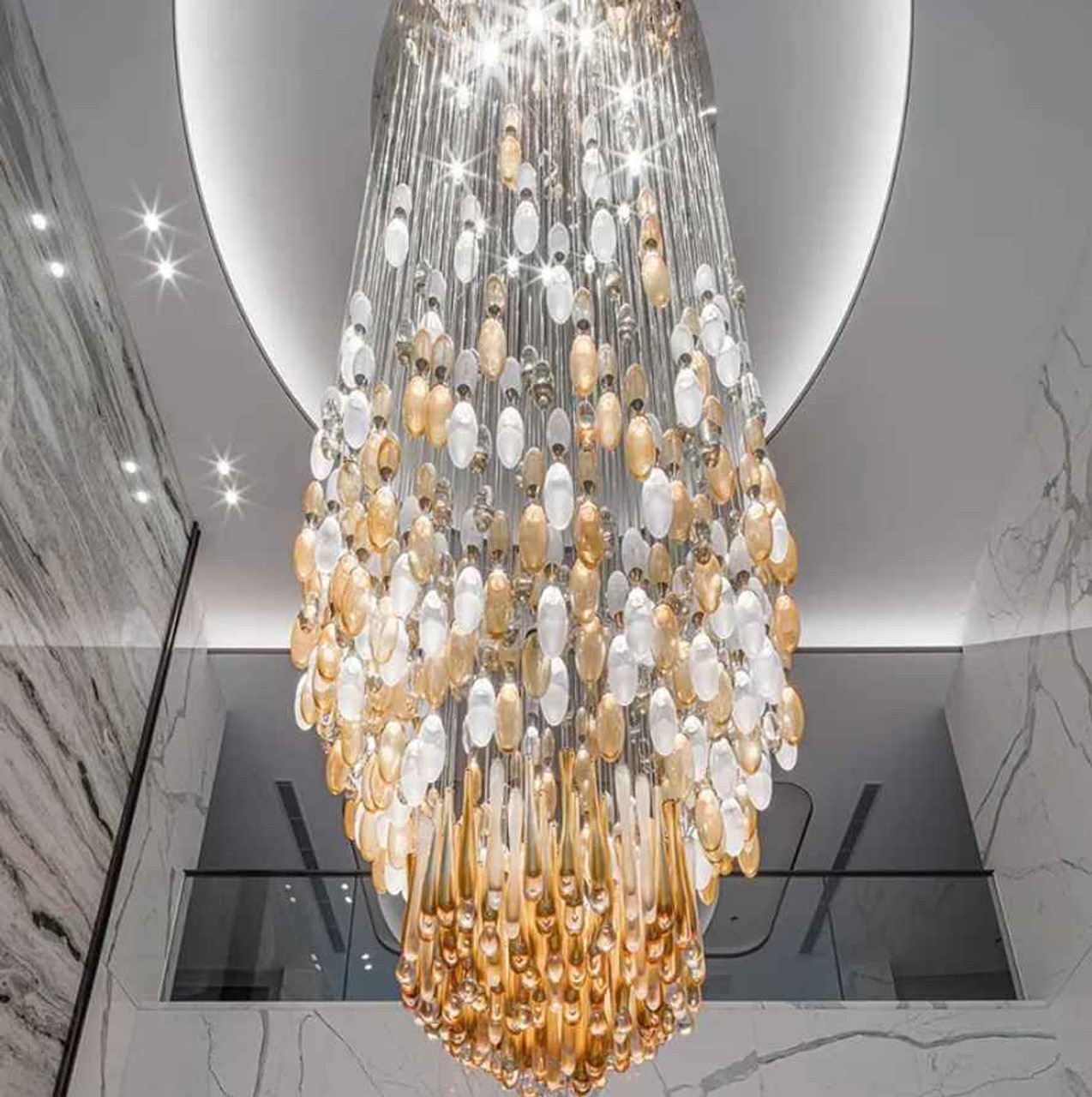The Intersection of Light, Material, and Architecture in frameless Immersive Art
21st Aug 2024
The Intersection of Light, Material, and Architecture in Frameless Immersive Art
Immersive art is a dynamic and evolving field that challenges traditional notions of art and architecture. By removing boundaries and integrating multiple sensory experiences, immersive art transports viewers into another realm, blurring the lines between the artwork and the environment. Central to creating these experiences are the elements of light, material, and architectural design, which work together to transform spaces, alter perceptions, and engage audiences on a profound level. This blog delves into how these elements intersect in the creation of frameless immersive art experiences, exploring their significance, techniques, and future trends.
The Significance of Lighting Design in Setting the Tone for Immersive Art Experiences
Lighting is one of the most powerful tools in the creation of immersive art. It has the ability to set the mood, influence emotions, and guide the viewer's experience. In frameless immersive art, where traditional boundaries and frames are absent, lighting becomes even more crucial as it defines space, creates depth, and alters perception.
1. Creating Atmosphere and Mood
Lighting plays a critical role in establishing the atmosphere of an immersive art installation. Whether it's a warm, inviting glow or a stark, cold light, the choice of lighting can evoke different emotions and set the tone for the entire experience.
- Warm Lighting: Warm lighting, often in the range of 2700K to 3000K, can create a cozy, intimate atmosphere that draws viewers in and encourages contemplation. This type of lighting is often used in installations that aim to evoke feelings of nostalgia, comfort, or introspection.
- Cool Lighting: On the other hand, cool lighting, ranging from 4000K to 6500K, can create a sense of distance, sterility, or even unease. Cool lighting is often used in installations that explore themes of isolation, technology, or the future.
- Dynamic Lighting: In more complex installations, dynamic lighting—where the intensity, color, and direction of light change over time—can be used to create a sense of movement and transformation. This type of lighting can guide the viewer through different phases of the experience, altering their perception of time and space.
2. Defining and Redefining Space
In frameless immersive art, where traditional architectural boundaries are dissolved, lighting becomes a primary means of defining space. By strategically placing and directing light, artists and architects can create the illusion of walls, pathways, and even entire environments.
- Light as Architecture: In some installations, light itself becomes a form of architecture. For example, beams of light can be used to create the illusion of walls or columns, guiding the viewer's movement through the space. This technique can create a sense of structure within an otherwise open environment.
- Shadow Play: Shadows are another critical element in the use of light to define space. By manipulating shadows, artists can create a sense of depth and dimensionality, transforming a flat surface into a three-dimensional environment. Shadows can also be used to obscure certain areas, adding an element of mystery and encouraging viewers to explore.
- Light and Reflection: The interplay of light and reflective surfaces can further enhance the sense of space in an immersive installation. Mirrors, glass, and other reflective materials can amplify and distort light, creating the illusion of infinite space or multiple dimensions.
3. Guiding the Viewer’s Experience
Lighting can also be used to guide the viewer's experience, directing their attention and movement through the installation. By highlighting certain elements and casting others in shadow, lighting can control the flow of the experience and create a narrative.
- Spotlighting: Spotlighting is a common technique used to draw attention to specific elements within an installation. By focusing light on a particular object or area, the artist can ensure that the viewer's attention is directed where it's intended.
- Lighting Transitions: Gradual transitions in lighting can be used to guide the viewer through different phases of the experience. For example, a shift from bright, harsh lighting to soft, ambient light can signal a change in tone or theme, helping to structure the narrative of the installation.
- Interactive Lighting: In some immersive installations, lighting is designed to respond to the viewer's presence or actions. Sensors can trigger changes in light intensity, color, or direction based on the viewer's movements, creating a dynamic, interactive experience.
How Material Choices Influence the Sensory Impact of the Space
The materials used in an immersive art installation are just as important as the lighting in shaping the viewer's experience. Materials such as transparency, reflection, and texture play a significant role in creating sensory impact, influencing how the space is perceived and interacted with.
1. Transparency and Opacity
The use of transparent and opaque materials can create layers of perception, allowing viewers to see through surfaces or be partially obscured by them. This interplay of visibility and concealment can evoke a range of emotions, from curiosity to anxiety.
- Glass and Acrylic: Transparent materials like glass and acrylic are often used to create barriers that are both present and absent, allowing light to pass through while still defining space. These materials can create a sense of openness and continuity, as well as fragility and vulnerability.
- Frosted or Opaque Surfaces: Frosted or opaque surfaces, on the other hand, can obscure vision, creating a sense of mystery or unease. These materials can be used to create hidden spaces or to diffuse light, softening the overall atmosphere.
- Layering Transparency: By layering transparent and opaque materials, artists can create complex visual effects that change as the viewer moves through the space. This technique can create a dynamic, ever-changing environment that challenges the viewer's perceptions.
2. Reflection and Mirrors
Reflective materials, particularly mirrors, are powerful tools in immersive art. They can distort reality, create illusions of infinite space, and challenge the viewer's sense of self and surroundings.
- Mirrored Surfaces: Mirrored surfaces can create the illusion of larger spaces by reflecting the environment back onto itself. This effect can be disorienting, as it blurs the boundaries between the physical space and its reflection, creating a seamless, infinite environment.
- Distorted Reflections: Convex or concave mirrors, as well as reflective surfaces with irregular textures, can distort reflections, creating abstract and surreal effects. These distortions can challenge the viewer's perception of reality, encouraging them to question what they see.
- Interactive Reflections: In some installations, mirrors are used interactively, reflecting the viewer's image back at them or allowing them to see themselves in relation to the artwork. This technique can create a deeply personal experience, as the viewer becomes part of the art.
3. Texture and Tactility
The texture of materials in an immersive art installation can influence how the space is experienced on a sensory level. Different textures can evoke different emotional responses and encourage physical interaction with the artwork.
- Smooth vs. Rough Surfaces: Smooth, polished surfaces can create a sense of calm and refinement, while rough, uneven textures can evoke a sense of rawness or instability. The contrast between these textures can create tension within the space, adding to the emotional impact of the installation.
- Organic Materials: Natural materials like wood, stone, or fabric can add warmth and tactility to an immersive space. These materials can create a sense of connection to the natural world, grounding the experience and providing a counterpoint to more abstract elements.
- Tactile Interaction: In some immersive installations, viewers are encouraged to touch and interact with the materials, adding a physical dimension to the experience. This tactile engagement can deepen the viewer's connection to the art, making the experience more immersive and memorable.
The Architectural Techniques Used to Integrate Light and Material Seamlessly into Immersive Environments
Creating a frameless immersive art experience requires more than just the strategic use of light and material—it also involves architectural techniques that seamlessly integrate these elements into the overall design. The architecture of an immersive installation is not just a backdrop for the art; it is an active participant in the experience, shaping how light and material interact with the space and the viewer.
1. Integrated Lighting Systems
In frameless immersive art, lighting is often integrated directly into the architecture, becoming an intrinsic part of the space rather than an external addition. This integration allows for more precise control over how light interacts with the materials and the environment.
- Recessed Lighting: Recessed lighting fixtures, embedded within walls, ceilings, or floors, can create subtle, indirect illumination that enhances the material textures and shapes the space without being intrusive. This technique is often used to highlight specific architectural features or to create a diffuse, ambient glow.
- Cove Lighting: Cove lighting, where lights are hidden in recesses or ledges, creates a soft, even wash of light that can be used to define the edges of a space or to create a floating effect. This type of lighting can make the boundaries of a space feel less rigid, contributing to the frameless nature of the installation.
- Backlighting: Backlighting materials like translucent panels or glass can create a luminous, ethereal effect, making the material itself appear to glow. This technique can be used to create a sense of depth and to highlight the transparency or texture of the material.
2. Material Integration
In addition to lighting, the materials used in an immersive art installation are often integrated directly into the architecture, blurring the lines between the structure and the artwork. This integration can enhance the sensory impact of the materials and create a more cohesive experience.
- Embedded Materials: Materials like glass, metal, or fabric can be embedded within the architecture, becoming part of the walls, floors, or ceilings. This technique allows for a seamless transition between different elements of the installation, creating a unified, frameless environment.
- Modular Components: Modular architectural components, such as panels or blocks, can be used to create flexible, adaptable spaces that can be reconfigured as needed. These components can be made from a variety of materials, allowing for different textures, colors, and levels of transparency to be combined within the same space.
- Material Transitions: Smooth transitions between different materials, such as from wood to glass or from metal to fabric, can create a fluid, continuous environment. These transitions can be achieved through careful attention to detail in the construction process, as well as through the use of intermediary materials like resin or silicone.
3. Architectural Geometry
The geometry of the architecture itself plays a crucial role in how light and material interact within an immersive space. The shape and layout of the space can influence how light moves through the environment and how materials are perceived.
- Curved Surfaces: Curved surfaces, such as walls, ceilings, or floors, can create a sense of fluidity and movement within the space. These surfaces can reflect and refract light in unique ways, creating dynamic patterns and enhancing the sensory impact of the materials.
- Faceted Geometry: Faceted or angular surfaces can create a more fragmented, complex environment, where light and shadow interact in unexpected ways. This type of geometry can create a sense of tension or disorientation, contributing to the overall immersive experience.
- Open Plan Layouts: Open plan layouts, where spaces flow into one another without clear boundaries, can create a sense of openness and continuity. This layout can be enhanced by the use of transparent or reflective materials, as well as by careful attention to the placement of lighting fixtures.
Examples of Immersive Art Installations That Successfully Combine Light, Material, and Architecture
To fully understand the potential of light, material, and architecture in creating frameless immersive art experiences, it's helpful to examine specific installations where these elements have been successfully combined. The following examples highlight how these elements can work together to create powerful, transformative environments.
1. "Infinity Mirrored Room - The Souls of Millions of Light Years Away" by Yayoi Kusama
Yayoi Kusama's "Infinity Mirrored Room" is a prime example of how light, material, and architecture can come together to create a frameless immersive experience. In this installation, a small, enclosed room is lined with mirrors on all sides, including the ceiling and floor. Hundreds of small LED lights are suspended from the ceiling, creating the illusion of an infinite, star-filled universe.
- Light and Reflection: The use of mirrors and small LED lights creates a boundless environment, where the light is reflected endlessly in all directions. The viewer's image is also reflected, making them a part of the infinite space.
- Material Integration: The mirrors are seamlessly integrated into the walls, ceiling, and floor, creating a continuous reflective surface that enhances the sense of infinity. The small size of the room contrasts with the vastness of the reflected space, creating a powerful, disorienting experience.
- Architectural Design: The simplicity of the room's architecture—essentially a mirrored cube—allows the light and material to take center stage, creating a space that feels both intimate and boundless.
2. "Light is Time" by Citizen Watch and Tsuyoshi Tane
"Light is Time" is an immersive installation created by Citizen Watch in collaboration with architect Tsuyoshi Tane. The installation features thousands of small, golden watch plates suspended from the ceiling, illuminated by a dynamic lighting system. The plates reflect the light, creating a shimmering, golden environment that evokes the passage of time.
- Light and Material: The interplay of light and reflective materials creates a mesmerizing environment where the light seems to dance across the surfaces. The golden plates catch and reflect the light, creating a sense of movement and fluidity.
- Material Integration: The watch plates are suspended from the ceiling in carefully arranged patterns, creating a seamless integration of material and architecture. The plates appear to float in the air, blurring the lines between the physical structure and the art.
- Architectural Geometry: The geometry of the installation is carefully designed to enhance the interaction between light and material. The arrangement of the plates creates a sense of depth and complexity, drawing the viewer into the space and encouraging exploration.
3. "Teshima Art Museum" by Ryue Nishizawa and Rei Naito
The Teshima Art Museum, designed by architect Ryue Nishizawa and artist Rei Naito, is an immersive art installation that blurs the boundaries between architecture, art, and nature. The museum consists of a single, organic-shaped concrete structure with two large openings that allow natural light and air to flow through the space.
- Light and Shadow: Natural light plays a central role in the Teshima Art Museum, creating a constantly changing environment as the light shifts throughout the day. The openings in the structure allow light to enter from different angles, casting dynamic shadows that interact with the space.
- Material and Architecture: The museum's concrete structure is both the architecture and the artwork, creating a seamless integration of material and design. The smooth, curved surfaces of the concrete enhance the flow of light and create a sense of calm and serenity.
- Interaction with Nature: The integration of natural elements, such as light, air, and the surrounding landscape, adds an additional layer to the immersive experience. The museum's open design encourages visitors to interact with the environment, creating a deep connection between the art, the architecture, and the natural world.
Future Trends in Using Light and Material to Enhance Frameless Art Experiences
As technology and design continue to evolve, the possibilities for using light and material to create frameless immersive art experiences are expanding. The following trends highlight some of the directions that this field may take in the future.
1. Augmented Reality and Virtual Reality Integration
Augmented reality (AR) and virtual reality (VR) are already being used to enhance immersive art experiences, and their integration with light and material is likely to become more sophisticated in the future. By overlaying digital elements onto physical spaces, AR and VR can create hybrid environments where the boundaries between the real and virtual worlds are increasingly blurred.
- AR Enhancements: AR can be used to project digital images, patterns, or textures onto physical materials, creating dynamic environments that change in response to the viewer's movements. This technology allows for endless customization and interactivity within immersive spaces.
- VR Environments: VR can create entirely virtual spaces where light and material are manipulated in ways that are impossible in the physical world. These environments can be designed to respond to the viewer's actions in real-time, creating a fully immersive, frameless experience.
2. Smart Materials
The development of smart materials—materials that can change properties in response to external stimuli—offers new possibilities for immersive art. These materials can be designed to change color, transparency, or texture in response to light, temperature, or touch, creating dynamic, responsive environments.
- Light-Responsive Materials: Materials that change color or transparency in response to light can create installations that evolve throughout the day or in response to the viewer's presence. These materials can enhance the sensory impact of the space, creating a more immersive experience.
- Shape-Shifting Materials: Smart materials that can change shape or texture in response to external stimuli can add a tactile dimension to immersive art. These materials can create environments that physically transform as the viewer interacts with them, blurring the lines between art, architecture, and technology.
3. Sustainable Design
As sustainability becomes an increasingly important consideration in design, the use of sustainable materials and energy-efficient lighting will play a larger role in the creation of immersive art experiences. The integration of natural light, renewable materials, and energy-efficient technologies will allow for the creation of immersive spaces that are not only visually stunning but also environmentally responsible.
- Natural and Recycled Materials: The use of natural and recycled materials can add a tactile, organic quality to immersive art installations while reducing the environmental impact. These materials can create a connection to the natural world, grounding the experience in a sense of place.
- Energy-Efficient Lighting: The integration of energy-efficient lighting, such as LEDs or solar-powered systems, can reduce the environmental footprint of immersive art installations while allowing for greater creative flexibility. These lighting systems can be designed to respond to natural light, creating dynamic environments that change throughout the day.
4. Increased Interactivity
Interactivity is a key element of many immersive art experiences, and future trends point to even greater levels of interactivity through the use of advanced sensors, AI, and responsive materials. These technologies will allow for the creation of environments that respond more intuitively to the viewer's presence, creating a deeper sense of engagement and immersion.
- AI-Driven Interactivity: AI can be used to analyze and respond to the viewer's behavior in real-time, creating personalized experiences that adapt to each individual's actions. This technology can enhance the sense of immersion by making the environment feel more alive and responsive.
- Responsive Materials and Surfaces: The use of materials that respond to touch, heat, or pressure can create installations where the viewer's physical interaction directly influences the space. These responsive surfaces can create a sense of agency, making the viewer feel like an active participant in the creation of the art.
Conclusion
The intersection of light, material, and architecture is at the heart of frameless immersive art experiences, where boundaries between the art, the environment, and the viewer are dissolved. Through the strategic use of lighting, the careful selection of materials, and the integration of these elements into the architectural design, artists and architects can create powerful, transformative environments that engage the senses and challenge perceptions.
As technology and design continue to evolve, the possibilities for creating immersive art experiences are expanding, offering new ways to explore the relationships between light, material, and space. Whether through the use of augmented reality, smart materials, or sustainable design, the future of immersive art promises to be as dynamic and boundaryless as the experiences it seeks to create.
These developments will continue to push the boundaries of what is possible in art and architecture, offering new opportunities for creators to engage audiences in profound and innovative ways.

